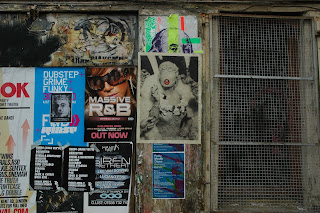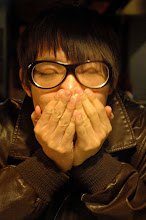The term flâneur comes from the French masculine noun flâneur—which has the basic meanings of ‘stroller’, ‘lounger’, ‘saunterer’, ‘loafer’—which itself comes from the French verb flâner, which means "to stroll". Charles Baudelaire developed a derived meaning of flâneur—that of "a person who walks the city in order to experience it". (http://en.wikipedia.org/wiki/Fl%C3%A2neur, 29 Jan 2010)
A British sociologist named Elizabeth Wilson (The Invisible Flâneur, 1992:6) has pointed out that in the 19th century emergence of new forms of urban space is the root causes of generation of the ‘flâneur’ group. The flâneur appeared in the street of Paris mainly pay more attention to street landscape and their main interest is details of life in the street, rather than those so-called public spaces created by Ottoman. There are three main features for this group: firstly, wandering around in the city all the time; secondly, keen observation of people and events happened in the street; finally, allow people to observe them curiously, but don’t interact with these observers. In terms of flâneur, they are only as strangers of a city and do not contact with people around them and places where they are. On the one hand, they are attracted by the new urban landscape and attempt to interpret the meaning of the unknown. On the other hand, due to disappearance of the old space and behavior, they try to find the lost sense of location but cannot find easily. Additionally, with the physical space and social space changing constantly, they cannot feel and understand a city clearly as well and their understanding of a city has always represented a kind of messy, discontinuity and unconsciousness. However, the flâneur’s method of understanding the urban space-in the walk, accepting the new information on a city through the interaction between people’s body and the urban space, is a very good approach of experiencing and understanding the space.
When people walking in the street, their activities themselves can be passing through somewhere quickly, strolling in the path, purchasing goods in retail outlets, visiting the commercial windows and visiting some city's monuments or buildings. These movements with different purposes and interactions with the urban space extend the meaning of space when people go into it and increase its uncertainties. Obviously, this meaning’s extension and uncertainties challenge alienation and loss of mobility of the urban space at the same time. Therefore, the way people perceive the urban space also is beyond the semiotic analysis and interpretation. In fact, the same principle can be used in understanding architectural and interior space and the movement and interaction without purposes make space into a kind of structure which can be interpreted and understood. According to Phenomenology of Perception theory, British sociologist Sennett based on ‘Flâneur’ idea was trying to re-establish the relationship between the body and space in vision, hearing, touch, smell and the way they are interconnected in order to break the traditional dualism of cognitive style. In fact, in terms of Flâneur, there are two factors in the key point: the first one is the interaction between people’ body and the space; the second one is the movement without any purposes. It is these two factors that make the communication between people and space become more playful and uncertain. Therefore, based on the situation, re-recognition of the space can be possible.






















































